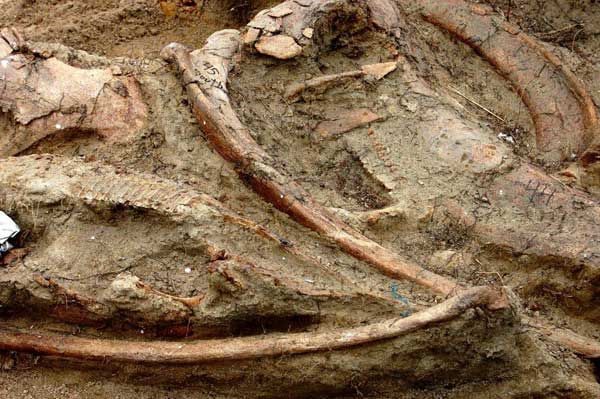Deceptive Paleontology Reporting
People are a mite confused about the word fossil, seeing as how it's used to mean old stuff as well as organisms that are permineralized (organic material is replaced by minerals) or petrified (turned to stone). I could call my mother-in-law a "fossil", but people would know it would be a disrespectful term about her old age, and they would have sense enough to know that she doesn't fit any scientific use of the word fossil. When it comes to old dead things called fossils, sometimes scientists as well as us reg'lar folk do it. Ian Juby mentioned the shilly-shallying over that word in this video clip, starting at the 20 minute 13 second mark.
Believers in particle-to-parasaurolophus evolution don't cotton to having the news of soft tissues and actual bones being found because those facts refute their long-age presuppositions. When hadrosaur bones were found, the news report was that they had fossilized bones. That's playing word games and leaves out pertinent information: they were not permineralized or petrified. Nice bit of propaganda, guys! Misrepresenting data won't change the facts that the world was created recently, and evolution did not happen.
 |
| Hadrosaur fossil. The 2010 article referred to both fossil and bones.Image credit: Mark E. Jacobsen, Bureau of Land Management |
‘If Noahs Flood really happened, then why don’t we see any evidence for it?’ a skeptic might ask. In today’s era of mass-media disinformation, this type of question is hurled at Bible-believers daily. The answer is quite simply this: evidence for Noah’s Flood is everywhere, but it is not reported as such by mainstream secular sources. A recent Associated Press article posted on the Guardian website provides us yet another perfect example of how evidence can be hidden in plain sight and presented in a completely dishonest way.To learn the hard truth, click on "Media bias hides the significance of Alaskan hadrosaur finds".
The Liscomb bonebed is in the Prince Creek Formation in northern Alaska. A report by a team of scientists who’ve been excavating in this area detailed what they claim is a new type of hadrosaur (duck-billed dinosaur), which they named Ugrunaaluk kuukpikensis. It was called “saurolophine”, meaning a member of the Saurolophine subfamily that includes the genus Saurolophus. The Associated Press immediately published an online article about the paper. but curiously, a very important detail was omitted: the bones are not fossilized!
Here is an excerpt from the original paper: